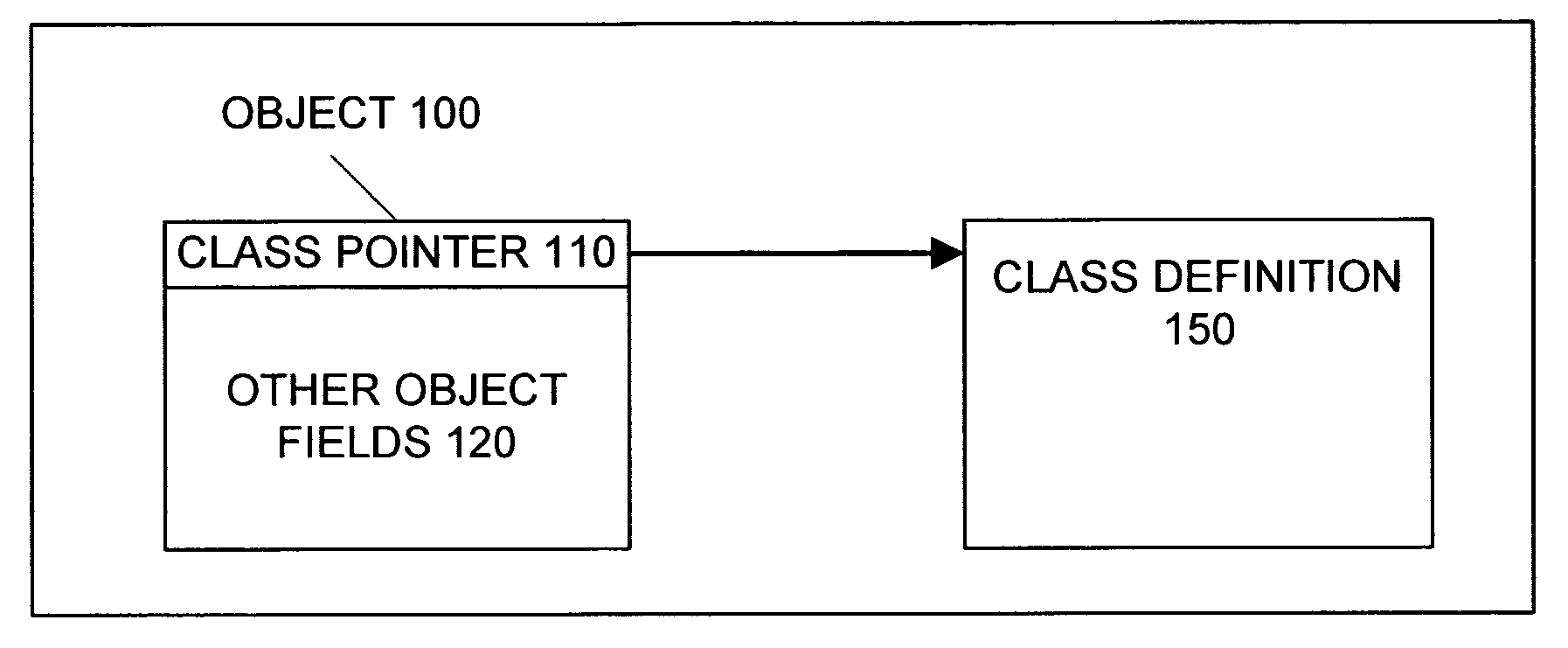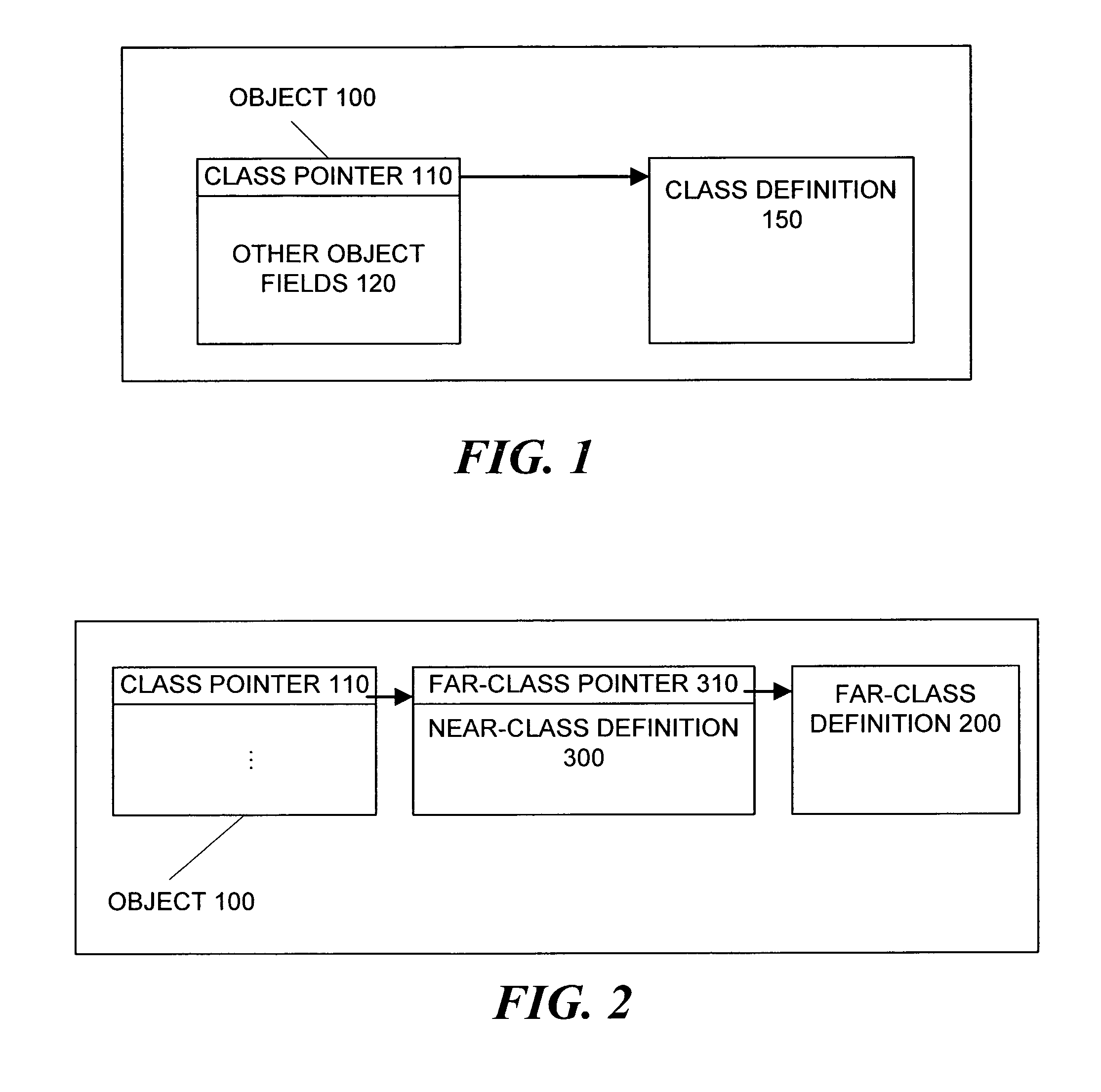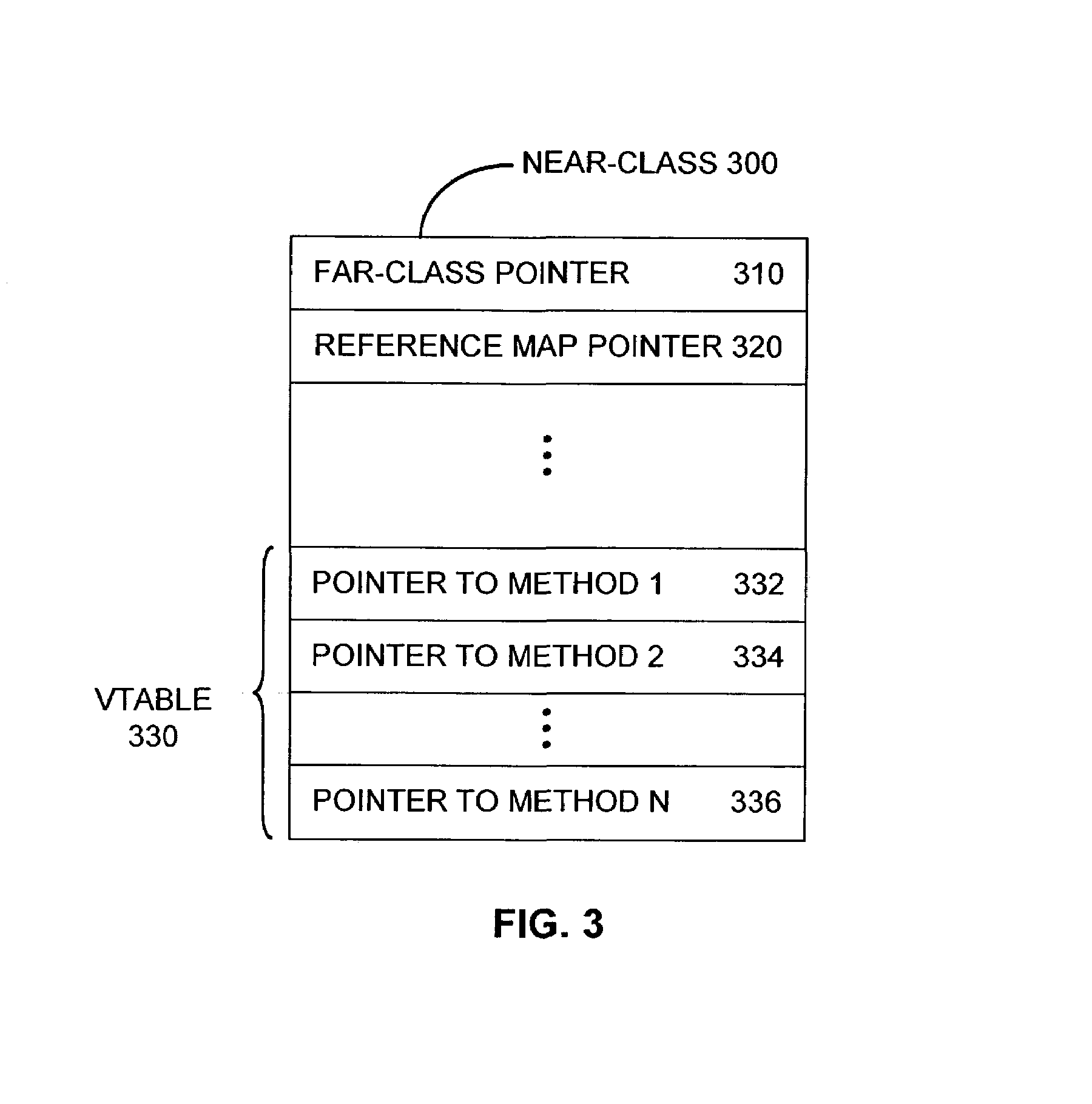Specializing write-barriers for objects in a garbage collected heap
a garbage collector and write-barrier technology, applied in the field of memory management, can solve the problem of not implementing write-barriers at all, and achieve the effect of reducing the number of write-barriers executed, and reducing the number of write-barriers
- Summary
- Abstract
- Description
- Claims
- Application Information
AI Technical Summary
Benefits of technology
Problems solved by technology
Method used
Image
Examples
Embodiment Construction
A. Reference-Writes to Receiver Objects
[0078]In a typical implementation of the invention, the areas in which a garbage collector does not rely on write barriers are those in the youngest generation of a multi-generation heap. The collector completely scans these areas at each garbage-collection interval. On the other hand, in a larger, “mature” generation, the garbage collector relies on write barriers so it may confine its scanning to those locations of the generation in which objects have been modified since the last garbage-collection interval. According to the invention, there are some class members for which the compiler generates two versions—one version that includes one or more write barriers and is used when the receiver object is located in a mature generation, and another version, which is used when the receiver object is located where write barriers are generally not employed, that uses fewer write barriers. The assumption is that receiver objects whose methods lack wri...
PUM
 Login to View More
Login to View More Abstract
Description
Claims
Application Information
 Login to View More
Login to View More - R&D
- Intellectual Property
- Life Sciences
- Materials
- Tech Scout
- Unparalleled Data Quality
- Higher Quality Content
- 60% Fewer Hallucinations
Browse by: Latest US Patents, China's latest patents, Technical Efficacy Thesaurus, Application Domain, Technology Topic, Popular Technical Reports.
© 2025 PatSnap. All rights reserved.Legal|Privacy policy|Modern Slavery Act Transparency Statement|Sitemap|About US| Contact US: help@patsnap.com



